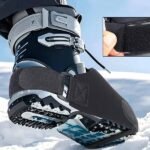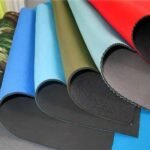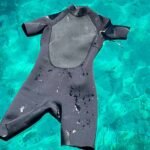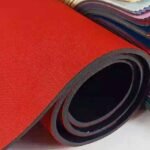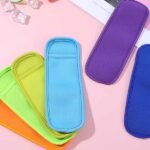Have you ever wondered how to work with neoprene fabric, a material known for its durability and versatility? Whether you’re creating wetsuits, bags, or accessories, sewing neoprene requires specific techniques and tools to achieve professional results. But is it really as challenging as it seems?
Yes, neoprene fabric can be sewn effectively, even with a regular sewing machine, as long as you use the right tools and techniques. With proper preparation, such as selecting the right needle and thread, and understanding its unique properties, sewing neoprene can become an enjoyable and creative process.
Imagine crafting a durable neoprene bag or a customized wetsuit that fits perfectly. With the right guidance, you’ll be able to sew neoprene confidently and explore its full potential. Let’s dive into everything you need to know about sewing this fabric.
Can you sew neoprene with a regular sewing machine?
If you’ve never worked with neoprene before, you might wonder if it requires specialized equipment. Let’s clear up the confusion.
Yes, you can sew neoprene with a regular sewing machine as long as you use the right tools, such as a heavy-duty needle and polyester thread. It’s important to adjust the machine settings to accommodate the fabric’s thickness and elasticity.
Neoprene’s dense structure might intimidate beginners, but most home sewing machines can handle it with a few adjustments. If you don’t have an industrial sewing machine, don’t worry—your trusty household machine can still get the job done with some tweaks.
Is neoprene hard to sew?
Many beginners perceive neoprene as a challenging fabric, but is it really that difficult?
No, neoprene is not hard to sew if you follow the correct steps and use appropriate tools. While its thickness and stretchiness require a bit of preparation, the process becomes manageable with patience and practice.
Tips for Handling Neoprene During Sewing
- Pinning: Use fabric clips instead of pins to avoid puncturing the material.
- Cutting: Sharp fabric scissors or a rotary cutter ensures clean edges.
- Stitching: Test different stitch types, such as a zigzag stitch, to accommodate the fabric’s stretch.
Once you understand neoprene’s behavior, you’ll find it easier to control and work with it effectively.
What kind of needle do you use to sew scuba fabric?
The type of needle you choose can make or break your neoprene sewing project. What’s the best option?
A ballpoint or stretch needle, typically size 90/14 or 100/16, is ideal for sewing neoprene. These needles are designed to pierce through thick, elastic materials without damaging the fabric.
Why Needle Choice Matters
- Standard Needles: These may cause skipped stitches or tears in neoprene.
- Ballpoint Needles: They glide through the fabric’s weave, minimizing snags.
- Heavy-Duty Needles: Recommended for thicker neoprene layers.
Always test your needle on a fabric scrap before starting your project to ensure smooth sewing.
Is Sewing Neoprene Fabric Different from Other Fabrics?
Sewing neoprene requires a different approach compared to standard fabrics like cotton or polyester. Why?
Yes, sewing neoprene is different because of its thickness, elasticity, and unique properties like water resistance and insulation. These features demand specialized tools and techniques for optimal results.
Key Differences Between Neoprene and Other Fabrics
| Feature | Neoprene | Regular Fabrics |
|---|---|---|
| Thickness | Typically 1-7mm | Less than 1mm |
| Stretchability | High | Varies |
| Tools Needed | Heavy-duty needle, clips | Standard needle, pins |
| Stitch Type | Zigzag or stretch stitch preferred | Straight stitch |
Understanding these differences will help you adapt your sewing techniques and avoid common mistakes.
How to Sew Neoprene Fabric Step by Step?
Now that you understand the basics, let’s break down the process of sewing neoprene into simple, actionable steps.
To sew neoprene, start by preparing your materials and tools, then follow these steps:
-
Prepare the Fabric
- Wash and dry neoprene if needed (some projects may skip this step as neoprene doesn’t fray).
- Use a rotary cutter for clean, even cuts.
-
Set Up the Sewing Machine
- Insert a ballpoint or stretch needle.
- Use polyester or nylon thread for durability.
- Adjust stitch length to 3-4mm and test on a fabric scrap.
-
Pin or Clip the Fabric
- Avoid pins, as they can leave permanent holes.
- Use fabric clips to hold layers together securely.
-
Choose the Right Stitch
- Use a zigzag stitch or a stretch stitch to accommodate neoprene’s elasticity.
- For non-stretch seams, a straight stitch may work, but test first.
-
Sew Slowly
- Guide the fabric gently to prevent puckering.
- Keep a steady hand and avoid stretching the fabric while sewing.
-
Finish the Edges
- While neoprene doesn’t fray, you can use bias tape or a serger for a polished look.
Following these steps ensures a smooth sewing process and professional results.
Are There Specific Sewing Techniques for Different Neoprene Products?
Neoprene is used for a wide range of products, from wetsuits to koozies. Do these applications require different sewing techniques?
Yes, specific neoprene products often require unique sewing techniques to match their functionality and design. For example, wetsuits need sealed seams for water resistance, while koozies prioritize aesthetics.
Examples of Techniques for Popular Neoprene Products
Wetsuits
- Technique: Blind stitching or glued seams.
- Purpose: Ensure water resistance and flexibility.
Bags
- Technique: Reinforced stitching and topstitching.
- Purpose: Add durability for carrying heavier items.
Koozies
- Technique: Heat-sealed seams or zigzag stitching.
- Purpose: Maintain aesthetic appeal while holding snugly.
Adapting techniques to the product ensures functionality, durability, and style.
Conclusion
Sewing neoprene fabric might seem intimidating at first, but with the right tools, techniques, and a bit of practice, it becomes an enjoyable and rewarding process. Whether you’re making wetsuits, bags, or other creative items, understanding neoprene’s unique properties allows you to achieve professional results.
At Szoneier, we specialize in neoprene products and offer tailored solutions for your needs. With years of experience, advanced production lines, and a commitment to quality, we’re your reliable partner for custom neoprene projects.


